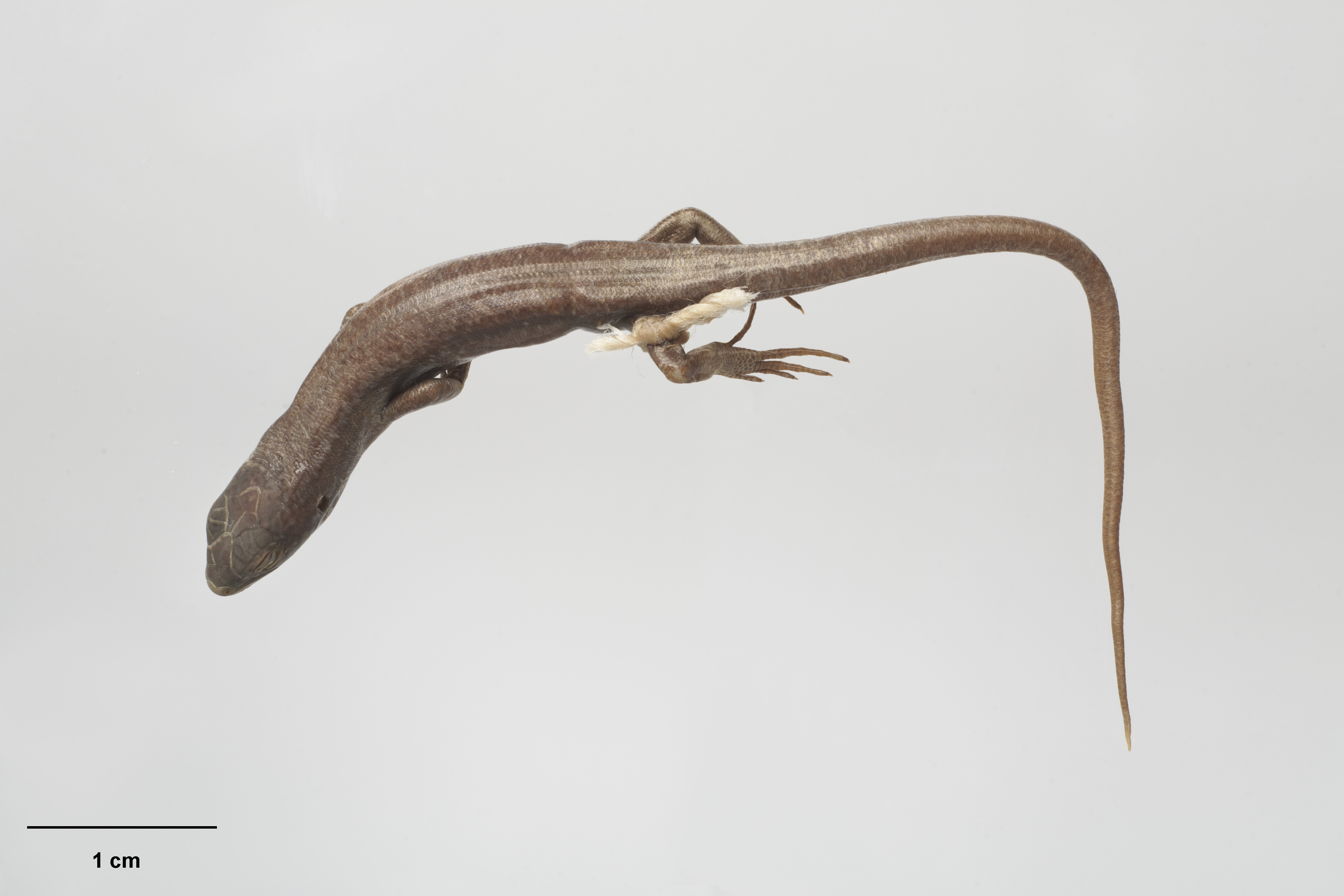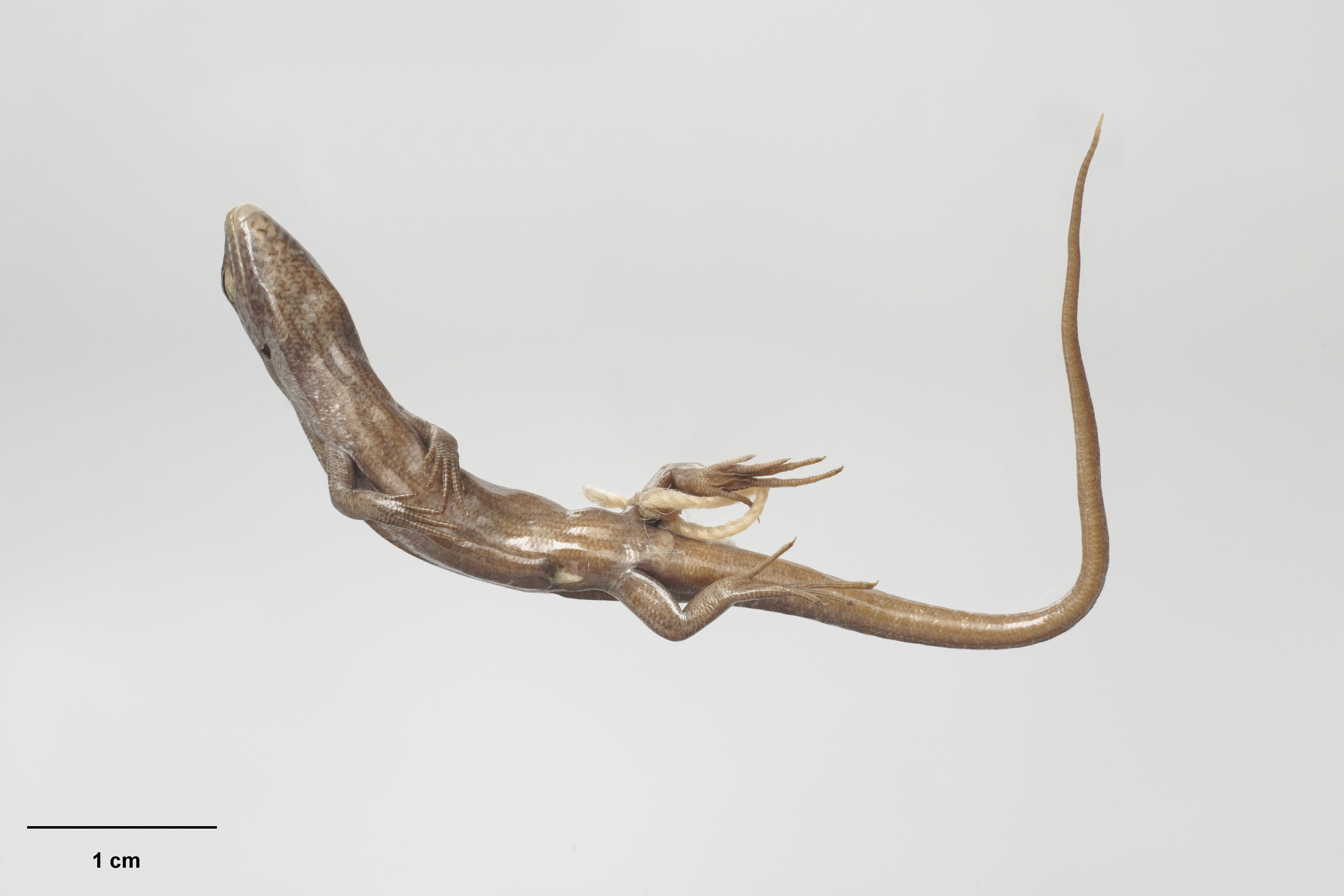Long toed skink
Status: Nationally Vulnerable
More information
- Department of Conservation (includes distribution map)
- New Zealand Herpetological Society Incorporated
- iNaturalist
Seen only in a few places in the upper reaches of Canterbury and southern Marlborough, it lives in dry rocky areas, particularly rock piles, boulder tumbles, and eroding river terraces.
Description
The long-toed skink (Oligosoma longipes) is a small to medium endemic skink that grows up to 67mm long Its dorsal (back) is grey-brown, with distinctive paler and dark spots and flecks and rudimentary darker strip down the middle of its back. The sides have a broad dark-coloured stripe edged with pale, notched stripes. The belly is grey with dark speckles. Its most distinctive feature is exceptionally long toes and tail.eing cold-blooded, it needs warmth to digest food and is commonly seen basking in the sun on warm rocks. As it was only discovered in 1997, little is known about it.


